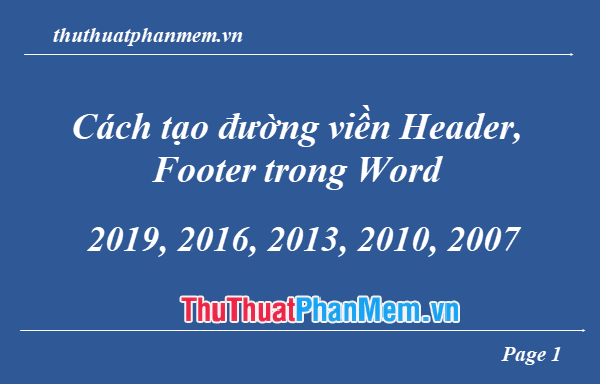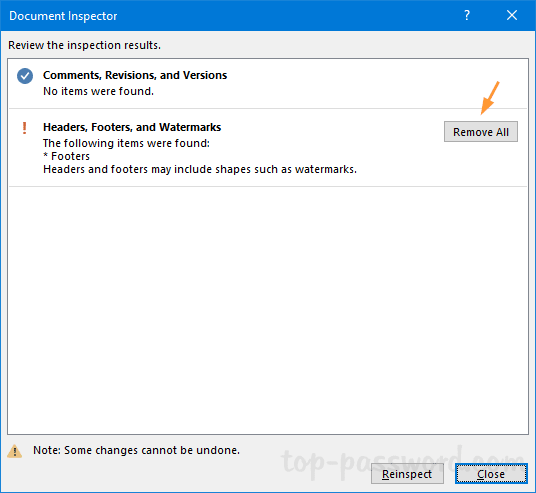
Brings classic menus and toolbars to Project 2010/2013/2016 and other applications of Office 2010/2013.Click the Page Setup in the right bottom of the pane (which I have emphasized in Shot 3), then the same window (as Shot 2 shows) pops up, and you can insert header and footer there. Click the " File" tab, choose Print, and you will see the settings in the right pane. Without Classic Menu, it still can be found but not be so intuitive. Many users search a long time for this function in the Ribbon. If you have not Classic Menu for Project 20 If you have Classic Menu for Project 20 installedĬlick File > Page Setup, (Shot 1), and a window for configuring the pages pops up, and you can insert header and footer there (see Shot 2).

page 3 has Header Section 2, Footer Section 2. page 2 has Header Section 1, Footer Section 1.

Currently, the document looks like this: page 1 has Header Section 1, Footer Section 1. I want to delete sections 2 and 3, so that only 1 section exists for the entire document. If you were using Project 2003 or 2007 before and shifting to Project 2010/2013/2016/2019 now, you will be a bit confused in finding out where the header and footer are in the new Ribbon interface. I have a 6 page document that has 3 Header Sections and 3 Footer sections. Sometimes inserting header and footer is needed for adding page numbers, date, title, author name and so on. Classic Menu for Office Home and Business.

This also activates the Header & Footer Tools section on Words Ribbon. Classic Menu for Office 2007 Applications Double click the header or footer area to make it active.Unfortunately, there is no way around this, short of rewriting a couple of Word commands as mentioned earlier in this tip. That means that they can do a Print Preview operation, copy the screen to the Clipboard, and then use their favorite graphics editing program to extract the graphic. Make sure that you are at the top of your Word document. Do not open the header or the footer of the document. There is one caveat to this: if your goal in doing the protection was to keep someone from accessing a graphic, rest assured that if someone can display the graphic on the screen, they can get it. Open the Word document that contains the header and the footer that you want to protect from changes. You will need to test this solution in your environment to ensure that the lack of functionality is an acceptable trade-off to the protection offered to your header and footer. When you protect a document in this manner, Word disables some tools so they cannot be used. The rest of the document can readily be changed. Your header and footer information is now protected from unauthorized changes. When you save your document, you can save it either as a regular document or as a template. Protect the document as a form, making sure that the first section (the part before your Continuous break) is the only section that is protected.Create the remainder of your document as desired.Insert a Continuous break on the first line of the document.Set up your header and/or footer as desired.Now on the Design tab, within the group Navigation, you can find the Link to Previous being highlighted. The Header & Footer Tools > Design tab gets activated in the Ribbon. (This inserts 'b' in the Find box but I thought you would want to know where to find such things in the future.) Press Replace All. To do so, double-click the Header or Footer section (extreme bottom or top of the page) at the beginning of the second chapter. You can do that by following these general steps: Under Special at the bottom of the expanded dialog you will find 'Section Break.' Click on that. Perhaps the simplest answer is to place the header and footer in its own section and protect that section from changes. Such an approach could be a Pandora's Box, with changing one command leading necessarily to the change of another. This means, of course, that your macros effectively replace the existing printer-related commands used by Word. This will remove the Header and Footer from. From the Design tab of that particular section, select the Different First Page checkbox. Step II: Double-clicking on the Header or Footer area will also activate the Header & Footer Tools section on Word’s Ribbon. If you like macros, you could develop macros that place the information in the header or footer just before printing. Step I: At first make the header and footer area active by double-clicking the area. There are several ways to go about protecting this information. For instance, you might want to ensure exact placement of text, a specific text treatment (font, size, etc.), or the inclusion of a graphic.

There may be times when you want to place information in a header or footer and have that information protected so a user cannot change it.


 0 kommentar(er)
0 kommentar(er)
